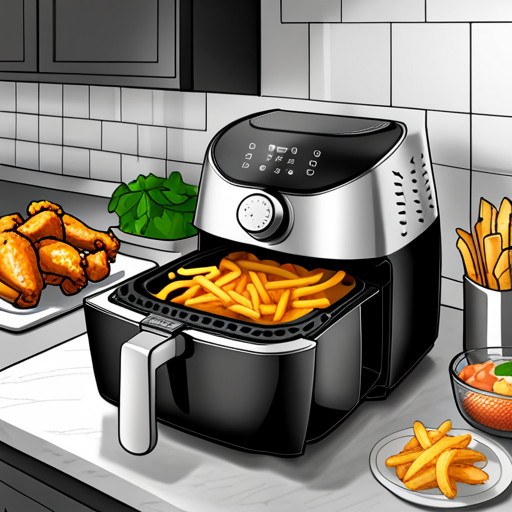
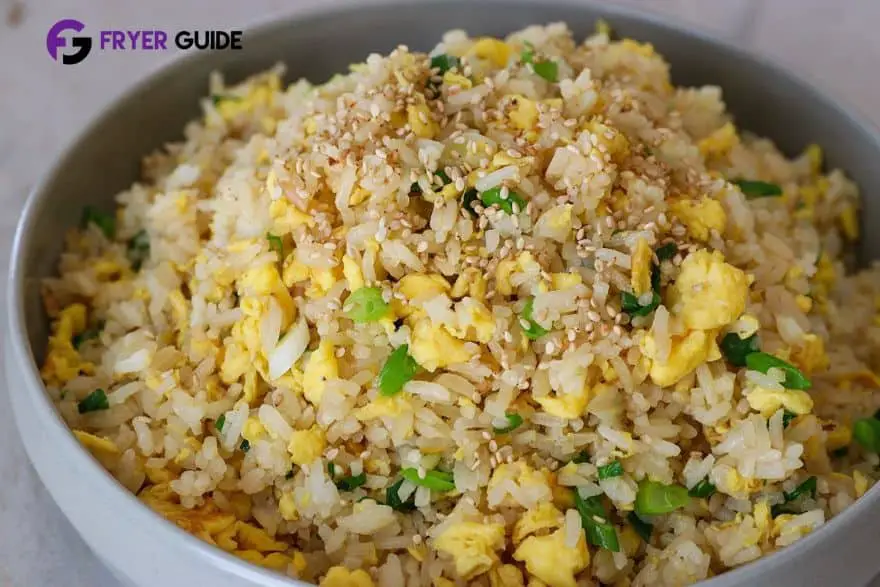
Fried rice is a massive staple food to people all over the world but is not as healthy as some may think. Just how unhealthy is fried rice and how bad is it for you?
Typically fried rice is not healthy, especially when ordered as a take out with 165 calories per 100 grams without any extra additions like chicken. However, you can control the unhealthy aspect of the dish if you make it yourself.
It is no secret that take outs or ready meals are not cautious of the levels of unhealthy fat they use in their food preparation with many places using deep fat fryers or other unhealthy methods.
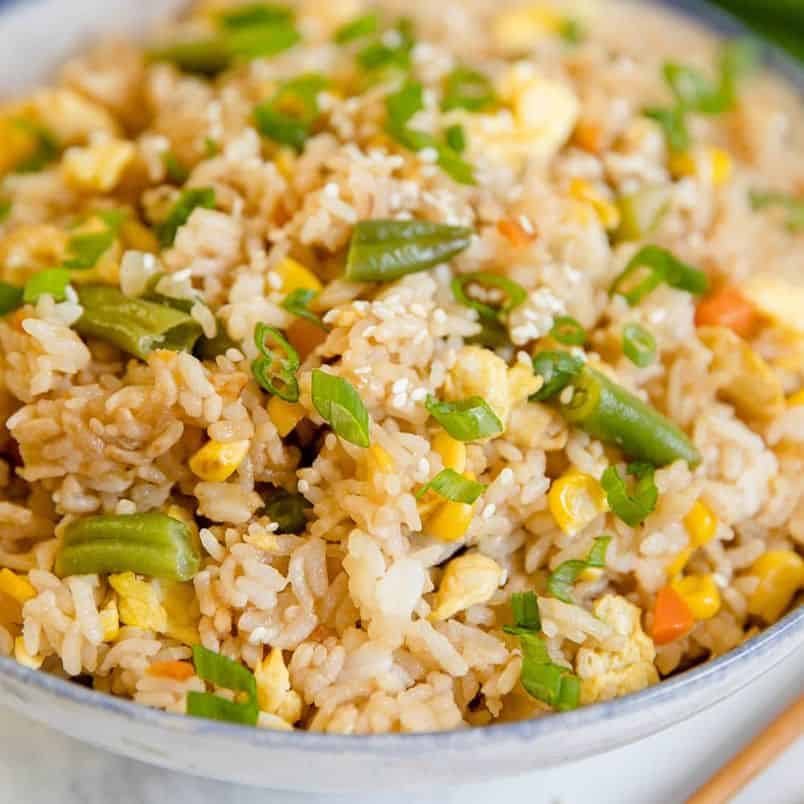
After all ready meals and take outs are supposed to be a treat so who really cares?
You should because one serving of egg fried rice can contain substantial enough insoluble fat which can trigger a whole range of health problem.
Contents
Even though the main components of egg fried rice could be considered healthy on their own, put together they outweigh the health positives.
Typically when you look up the ingredients used in egg fried rice, you will find 4 main ingredients that all take outs or restaurants use as the base of their recipe:
Used separately, these ingredients would not cause alarm for your diet but how they are prepared drastically affect the calorie count of the dish.
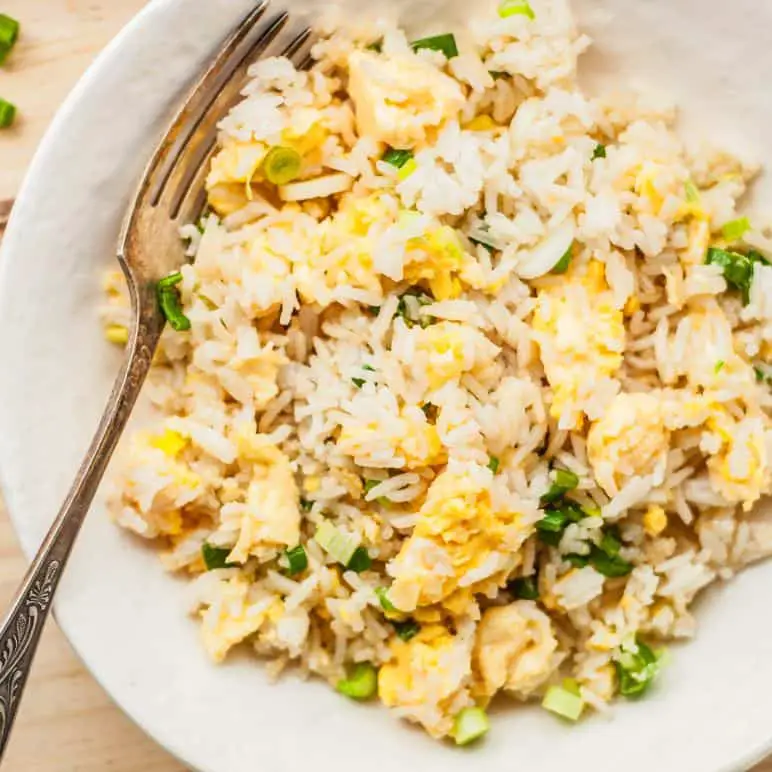
Fried eggs contain a whole range of nutritional goodness when prepared right. However, the substantial amount of oil and soy sauce that is used in egg fried rice significantly decreases the healthy output from the egg.
You may also find that the rice used by take out places is white rice which is typically more processed, especially when brought cheaply from suppliers. This adds next to no nutritional value to the dish.
Likewise, most businesses will use vegetable oil to keep prices low and get the best, crispiest results from their deep fat fryers, regardless of the range of the oils available to them.
Vegetable oil has considerably high levels of omega-6 which while needed in small doses like any other mineral, can cause chronic inflammation when eaten in large amounts.
Even though inflammation may not seem like much of an issue, it is a vegetable oil that is included in pretty much every type of food eaten today in one way or another and so you may already be exceeding your recommended amount daily without the added portion of egg fried rice on top of that.
The final ingredient that is cause for concern is soy sauce which sets Asian-style egg fried rice apart from rice dishes throughout the rest of the world.
It is the sodium within soy sauce that can be dangerous with as much as 879 milligrams of sodium in just one tablespoon.
The recommended amount of daily sodium intake is 1,500 milligrams so while one tablespoon on soy sauce does not succeed that, most traditional recipes call for at least two tablespoons worth.
High levels of sodium in your body can lead to heart problems due to a strain on your blood so the amount that you consume needs to be monitored effectively.
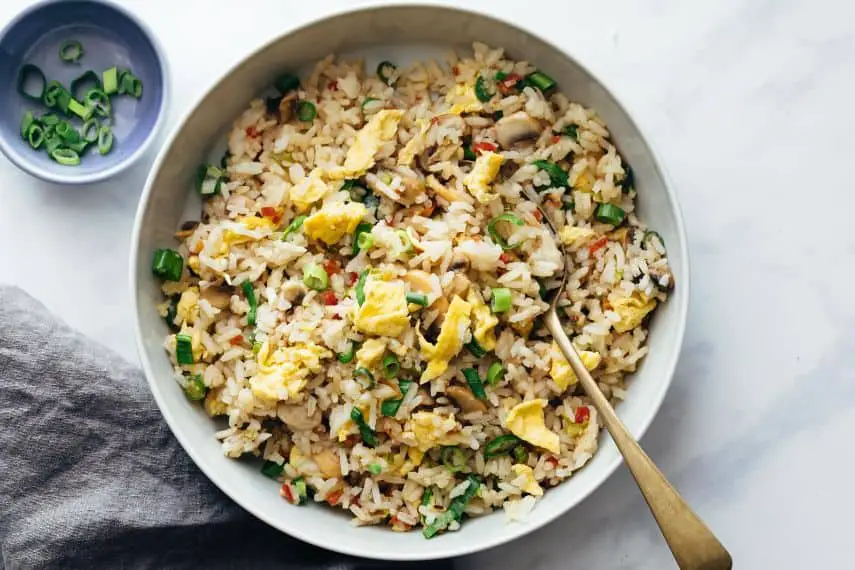
Just like any dish nowadays, there are certainly small adjustments you can make to an egg fried rice dish to make it healthier and less of a guilty pleasure meal.
The first change being that you make the dish yourself.
The best way to monitor the level of sodium and oils/ fats going into your body is to make the food yourself. Not only do you save money this way but you also can also make enough to have leftover for another day, saving you time and effort later on.
It is understandable that some may dread the idea of home cooking, considering it just another chore. However, weight loss organisations like weight watches have published a whole range of recipes to make the cooking feel less like a chore and more enjoyable.
Cooking egg fried rice in an easy task in comparison to other dishes. The basic concept is putting all of your ingredients into a wok and frying them up until they are cooked through.
The simplicity of the dish makes it easier to interchange ingredients with others to make a healthier alternative while still enjoying the feeling of treating yourself to a take out.
To start with, you could change the rice out for whole-grain rice or wild rice. These two types of rice are not only higher in antioxidants but also are typically considerably less process compared to white rice.
You could also swap out vegetable oil for olive oil of sunflower oil. While they may be a little more pricey, for a healthier diet it is recommended that you use less oil anyway so they will last significantly longer and be worth the price.
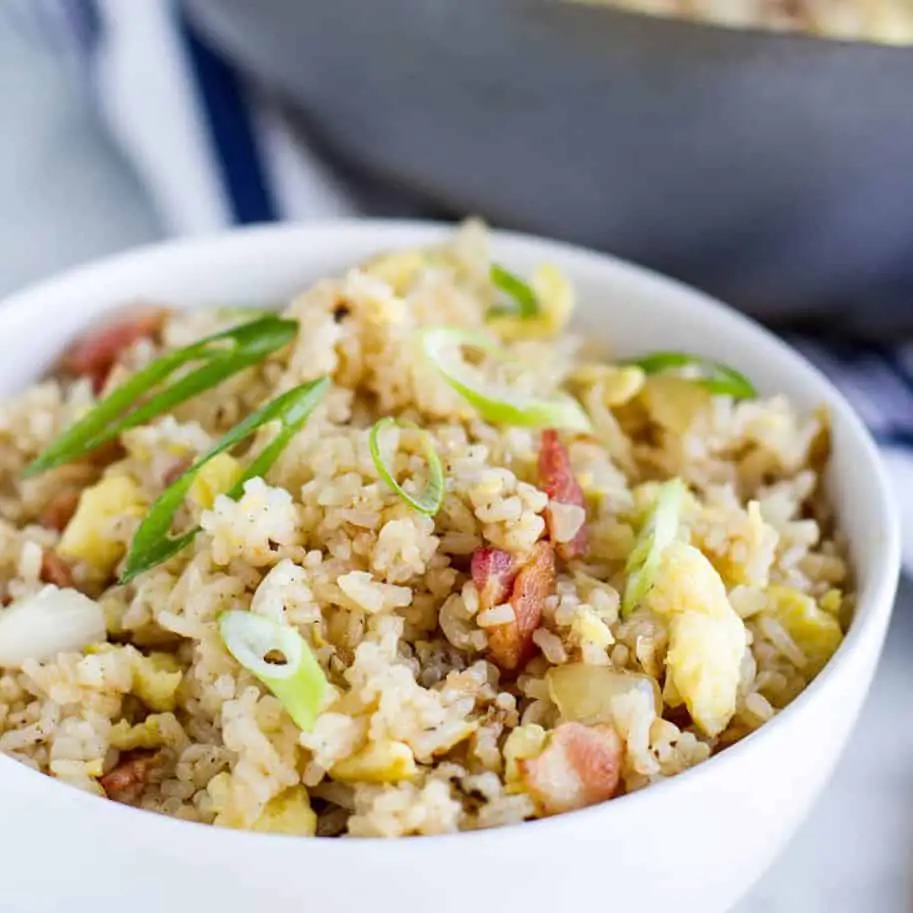
Finally, there is a sodium free or reduced sodium version of soy sauce available now in most supermarkets. The job of reducing your sodium intake is therefore taken care of but you could always use less soy sauce than whatever recipe you are using recommends.


